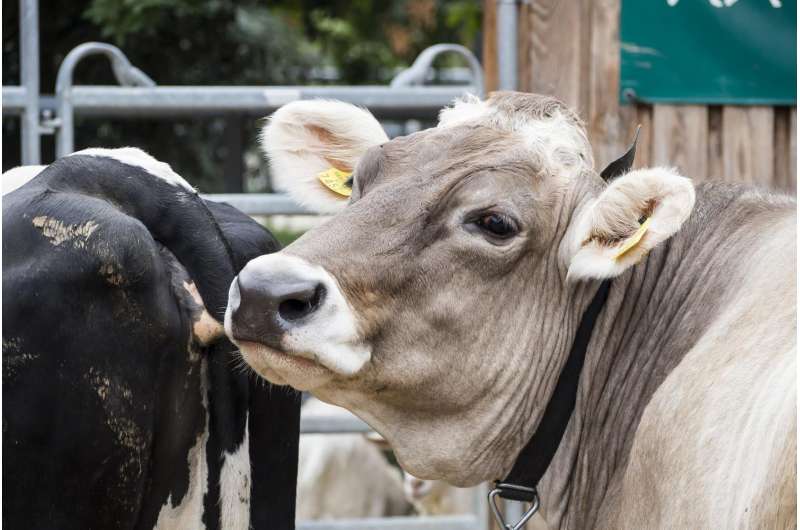Further decrease in the use of broad-spectrum antibiotics in Austrian dairy cows is necessary: study

Today's European Antibiotic Awareness Day demonstrates the necessity of the responsible use of antimicrobial substances in both humans and animals to prevent the development of antibiotic resistance. With this in mind, the Institute of Veterinary Public Health at the Vetmeduni Vienna published a study on the use of antibiotics on Austrian dairy farms earlier this year. Although dairy cattle are less frequently treated with antibiotics than pigs and poultry, the use of broad-spectrum antibiotics such as cephalosporins should be reduced. These drugs are considered particularly important by the World Health Organization (WHO), as they are essential for the treatment of severe bacterial infections in humans. Resistance to these antibiotics can, therefore, have very serious consequences. The study was published in English in the Berliner and Münchner Tierärztlichen Wochenschrift.
Antibiotics are vital for the treatment of bacterial infections in both human and veterinary medicine. Any antibiotic use, however, carries the risk of bacteria developing resistance to the drugs or that these resistant bacteria spread further. Infections with resistant bacteria are notoriously difficult to treat.
Certain broadband antibiotics, such as macrolides, fluoroquinolones and cephalosporins, are crucial for human medicine. Few substitute therapies exist for these drugs, which are consequently classified by the WHO as the Highest Priority Critically Important Antimicrobials (HPCIAs). Through the consumption of foods such as meat and milk, resistant bacteria could be transferred from livestock to humans. In veterinary medicine, these antibiotics should therefore only be used to treat in individual cases, after confirmation of the diagnosis and according to strict limitations.
Pilot study on antibiotic treatments for dairy cows in Austria
The collection of antibiotic use data can play a significant role in combating the development of resistance in bacterial pathogens. In 2016, the Institute of Veterinary Public Health published a study on the use of antibiotics in dairy cows.
In total, the study included 8027 records of antibiotic use on 465 Austrian dairy farms between 2008 and 2010. The researchers determined the amount of antimicrobial substances used and statistically analysed the dosage used per animal and year. Of specific focus was the use of the HPCIAs, i.e. the antimicrobial substances with particular importance for human health.
Dairy cattle rarely treated with antibiotics compared to pigs and poultry: improvement still possible
It was determined that dairy cows are much less frequently treated with antibiotics than poultry and pigs. Nevertheless, around 25 percent of the antibiotics used were attributable to HPCIAs, in particular to cephalosporins. "However, the use of cephalosporins also has an economic background", explains first author Walter Obritzhauser. "Milk from cows treated with antibiotics is not permitted to be used for human consumption for a certain period of time." The length of this withdrawal period depends on the degradation of the active substance in the body of the cow. The faster a drug is removed, the shorter the prohibited milk period and thus the lower the monetary loss for farmers.
Certain veterinary medicinal products containing cephalosporins have very short withdrawal periods and are therefore often used for the treatment of respiratory and foot diseases, as well as for udder infections in dairy cows. The results of this study will help to critically assess the use of antibiotics, in particular the HPCIAs. The responsible use of antibiotics helps to prevent the development and spread of resistant bacteria.
Mutual understanding important
"With our research, the Institute of Veterinary Public Health at the Vetmeduni Vienna is committed to raising awareness, not only of students, but also of practising veterinarians, as well as the general public," explains Annemarie Käsbohrer, professor and head of the institute. "Mutual understanding must be built up and developed. Then the relevant stakeholders can develop and implement procedures to reduce antibiotic use and to fight resistant bacteria."
European Antibiotic Awareness Day
The European Antibiotic Awareness Day was introduced in 2008 and takes place annually on the 18th November. The EAAD is a European initiative and aims to attract attention to the prudent use of antibiotics in both humans and animals.
Provided by University of Veterinary Medicine—Vienna

















